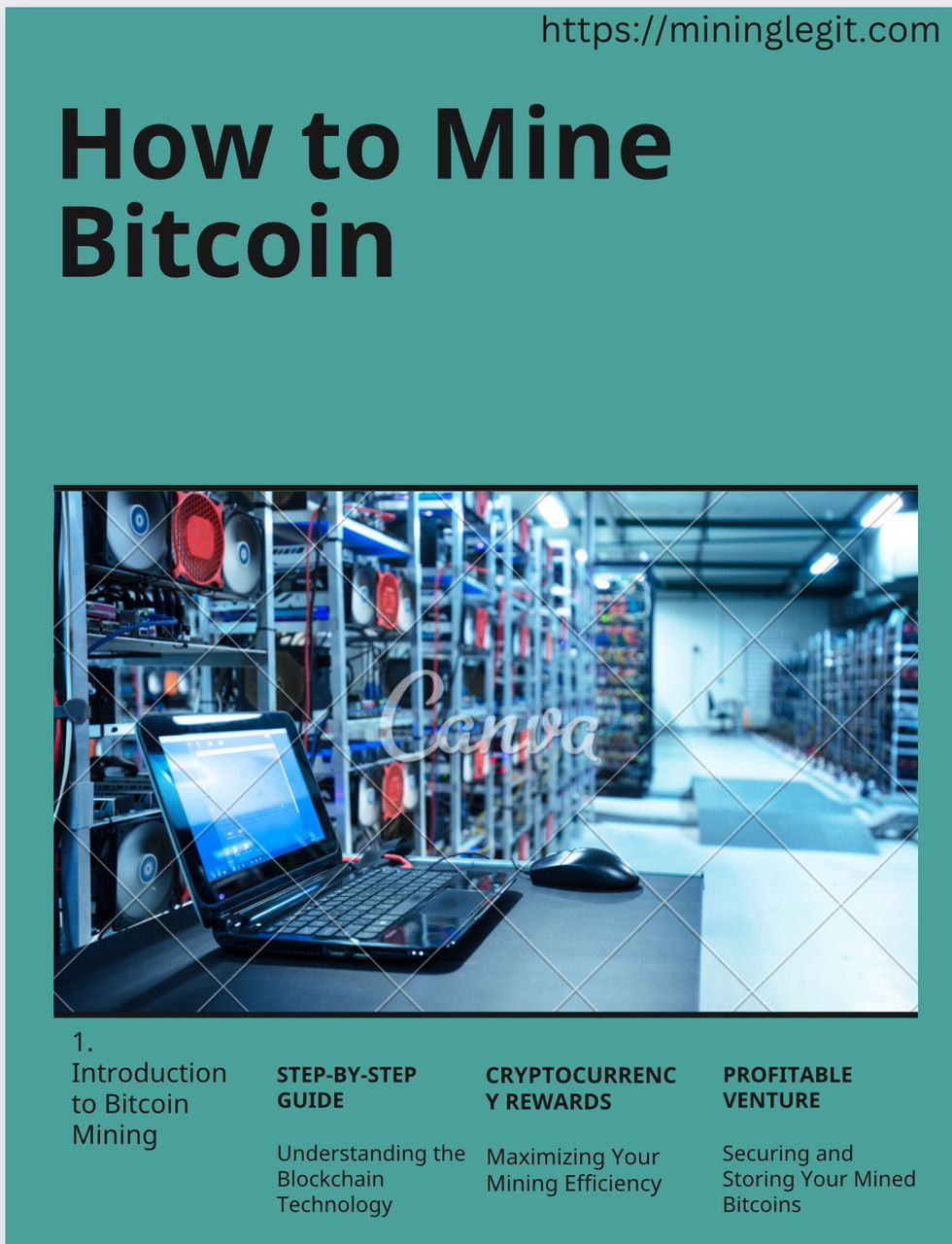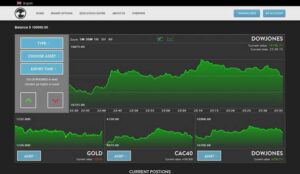How to mine Bitcoin: beginner guide to mining efficiency and troubleshooting the mining

Introduction to How To Mine Bitcoin in 2024
Bitcoin mining is the process through which new bitcoins are created and transactions are verified on the Bitcoin network. As one of the fundamental pillars of the cryptocurrency, mining plays a crucial role in securing the integrity of the blockchain and ensuring the decentralized nature of the system.
This article will provide a comprehensive guide on how to mine bitcoin, covering various aspects such as setting up a mining rig, understanding the hardware and software involved, joining mining pools, the intricacies of the mining process, profitability calculations, common challenges, and important security considerations.
Whether you are a novice looking to start mining or an experienced miner seeking to enhance your mining operation, this article aims to equip you with the necessary knowledge to navigate the world of bitcoin mining successfully.
What is Bitcoin mining?
Bitcoin mining is the process of validating and adding new transactions to the Bitcoin blockchain. It involves using powerful computers to solve complex mathematical problems, which helps secure the network and confirm transactions. In return for their efforts, miners are rewarded with newly created Bitcoin.
The role of miners in the Bitcoin network
Miners play a critical role in the Bitcoin network. Their main responsibilities include verifying transactions, preventing double-spending, and maintaining the integrity of the blockchain. By dedicating their computing power to the network, miners ensure that Bitcoin remains decentralized and secure.
Setting Up a Bitcoin Mining Rig
Choosing the right mining hardware
When setting up a mining rig, selecting the right hardware is crucial. You’ll need specialized equipment called ASICs (Application-Specific Integrated Circuits) that are designed specifically for Bitcoin mining. These ASICs offer high-speed processing power, energy efficiency, and optimal performance for mining operations.
Setting up a mining rig at home
Setting up a mining rig at home requires some technical knowledge and careful planning. You’ll need to consider factors such as electricity costs, cooling requirements, and noise levels. It’s also important to ensure a stable internet connection and proper ventilation to keep your equipment running smoothly.
Considerations for mining in a data center
For those who prefer a more professional setup, mining in a data center can be a viable option. Data centers offer a controlled environment with robust infrastructure, dedicated power supply, and enhanced security. However, keep in mind that renting space in a data center can come with additional costs and may require compliance with certain regulations.
Understanding Mining Hardware and Software
Types of mining hardware
There are various types of mining hardware available in the market, ranging from entry-level options to high-performance machines. It’s important to consider factors like hash rate (computational power), energy efficiency, and cost when choosing the right hardware for your mining operation.
Exploring different mining software options
Once you have your mining hardware set up, you’ll need to choose the appropriate mining software. Mining software acts as a bridge between your hardware and the Bitcoin network, allowing you to control and monitor your mining operation. Popular mining software includes CGMiner, BFGMiner, and EasyMiner, each with its own unique features and user interfaces.
Optimizing mining performance
To maximize your mining performance, there are several optimization techniques you can employ. These include tweaking mining software settings, optimizing hardware configurations, and keeping up with the latest updates and developments in the mining industry. Remember, every little improvement can make a difference in your overall mining efficiency.
Joining a Mining Pool
Benefits and drawbacks of joining a mining pool
Joining a mining pool allows you to combine your mining resources with other miners, increasing your chances of earning consistent rewards. It also helps in balancing the mining difficulty and provides a steady income stream. However, keep in mind that mining pools usually charge a fee and you’ll have to share the rewards with other participants.
Selecting the right mining pool
When choosing a mining pool, consider factors such as pool size, reputation, fee structure, and payout frequency. It’s important to find a pool that aligns with your mining goals and has a reliable and transparent operation.
Setting up and connecting to a mining pool
Setting up and connecting to a mining pool is usually a straightforward process. You’ll need to register an account with the pool, configure your mining software with the pool’s server information, and start mining. Most mining pools provide detailed instructions on how to set up and connect, making the process accessible even for beginners.
The Process of Bitcoin Mining
Overview of the mining process
So, you want to join the ranks of Bitcoin miners? Well, get ready for an adventure in digital gold digging! Bitcoin mining is the process of validating transactions on the blockchain and adding them to the public ledger. Miners use powerful computers to solve complex mathematical problems, and in return, they are rewarded with new bitcoins. It’s like solving puzzles and getting paid in virtual gold.
Proof of Work and blockchain validation
Bitcoin miners don’t just solve puzzles for fun; they provide an essential service to the network. The puzzles they solve are part of a system called Proof of Work, which ensures the security and integrity of the blockchain. By validating transactions and adding them to the blockchain, miners create an immutable record of all Bitcoin transactions. This decentralized verification process ensures that no single entity can manipulate the system or cheat the network.
Steps involved in solving a block
Mining a block is no walk in the park, but it’s not rocket science either (unless you’re a rocket scientist turned miner, in which case, more power to you!). Here’s a simplified breakdown of the steps involved:
1. Receive a bunch of pending transactions from the network.
2. Bundle those transactions into a block and add a header with some additional data.
3. Start hashing the header with different values until you find a solution that meets certain criteria (usually a hash with a certain number of leading zeros).
4. Once you find a valid solution, broadcast it to the network, and claim your well-deserved reward. Remember, mining is a competitive process, so it can take some time and effort to find that elusive solution. But don’t worry, the satisfaction of solving a block and earning those precious bitcoins is worth it!
Calculating Profitability and Return on Investment
Factors influencing mining profitability
Before you start mining, it’s crucial to assess the profitability potential. Several factors can influence your mining profitability, including the current Bitcoin price, mining difficulty, electricity costs, and the efficiency of your mining hardware.
Calculating mining costs and rewards
To determine if mining is a worthy endeavor, you’ll need to crunch some numbers. Start by calculating your mining costs, including electricity, cooling, hardware, and maintenance expenses. Then, estimate your potential rewards based on your mining power and the current block reward. Various online calculators can help you with these calculations, sparing you from going cross-eyed trying to decipher complex formulas.
Evaluating return on investment (ROI)
Once you have a clear understanding of your mining costs and potential rewards, it’s time to evaluate your return on investment. This involves estimating how long it will take for your mining earnings to cover your initial expenses. Keep in mind that the Bitcoin market can be volatile, so consider your risk tolerance and the possibility of unforeseen circumstances when assessing your ROI.
Overcoming Common Mining Challenges
Dealing with bitcoin mining difficulty and network congestion
Mining difficulty refers to the competitiveness of mining. As more miners join the network, the difficulty increases, making it harder to solve blocks. Network congestion can also affect mining, as it can lead to delays in transaction confirmation. To overcome these challenges, stay updated with the latest mining hardware, network optimizations, and recommended software updates.
Addressing power consumption and cooling issues
Mining can be a power-hungry endeavor, and the heat generated by mining rigs can turn your room into a sauna. To address power consumption, consider energy-efficient hardware and explore renewable energy options. As for cooling, proper ventilation, fans, or even specialized mining rigs with built-in cooling systems can help keep the temperature at a manageable level.
Troubleshooting hardware and software problems
Mining is not without its technical hiccups. From hardware malfunctions to software glitches, there will be times when things don’t go as planned. Stay equipped with troubleshooting knowledge, keep your hardware up to date, and have reliable support resources at your disposal. And remember, patience is key when dealing with technology. Take a deep breath, turn it off and on again, and try not to throw your mining rig out the window.
Ensuring Security and Safety in Bitcoin Mining
Cybersecurity considerations for miners
Mining involves handling valuable assets, so it’s essential to prioritize cybersecurity. Secure your mining operation with robust firewalls, antivirus software, and strong passwords. Regularly update your software to protect against vulnerabilities, and beware of phishing attempts and malicious websites. Remember, you’re mining for virtual gold, but there are digital bandits out there trying to steal it.
Protecting your digital wallet and private keys
Your Bitcoin wallet is your treasure chest, so guard it well! Use reputable wallet providers and ensure your wallet is encrypted and backed up. Keep your private keys secure, preferably offline or in hardware wallets. And please, don’t write your private keys on sticky notes and leave them lying around the house. That’s a disaster waiting to happen.
Best practices for securing bitcoin mining operations
To maintain a secure mining operation, follow these best practices: – Use two-factor authentication for your accounts. – Regularly update your mining software and firmware. – Keep backups of critical files and configurations. – Monitor your mining operation for any unusual activity. – Stay informed about the latest security threats and trends.
Remember, successful mining is not just about hitting it big with bitcoins; it’s also about staying safe and secure in this wild digital frontier. Good luck, fellow miner! May your hashes be fast, and your rewards be plentiful!In conclusion, bitcoin mining is a dynamic and potentially lucrative endeavor that requires careful planning, technical knowledge, and ongoing adaptation.
By following the steps outlined in this article and staying informed about the latest developments in the industry, you can embark on a successful mining journey. Remember to prioritize security, stay vigilant against challenges, and regularly evaluate the profitability of your mining operation. With dedication and a thorough understanding of the mining process, you can participate in the exciting world of bitcoin mining and contribute to the growth and decentralization of the cryptocurrency ecosystem. Happy mining!
FAQ
1. Is bitcoin mining profitable?
Bitcoin mining profitability depends on various factors such as the cost of electricity, the price of bitcoin, the efficiency of mining hardware, and the mining difficulty. It is essential to calculate the potential costs and rewards before investing in mining equipment and to regularly assess the profitability of your mining operation.
2. Can I mine bitcoin with my regular computer?
Mining bitcoin with a regular computer is not feasible anymore. Bitcoin mining requires specialized hardware called ASICs (Application-Specific Integrated Circuits) that are specifically designed for efficient mining. These ASICs offer significantly higher processing power and energy efficiency compared to traditional computers, making them essential for profitable bitcoin mining.
3. Do I need to join a mining pool?
While it is possible to mine bitcoin individually, joining a mining pool is generally more profitable for most miners. Mining pools allow participants to combine their computing power, increasing the chances of successfully mining bitcoins and receiving regular rewards. However, it is important to choose a reputable and reliable mining pool with fair reward distribution. Start mining bitcoin profitably with a reliable mining firm.
4. What are the security risks associated with bitcoin mining?
Bitcoin mining involves interacting with various online platforms, including mining software, mining pools, and digital wallets. It is crucial to prioritize security and take necessary precautions to protect your mining operation from hacking attempts, malware, and phishing attacks. Implementing strong passwords, using two-factor authentication, and keeping software up-to-date can significantly enhance the security of your mining activities. Read more about platform that offers bitcoin pools to retail customers and have mining efficiency.






